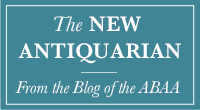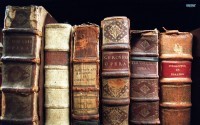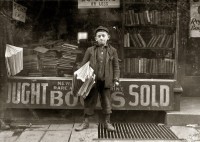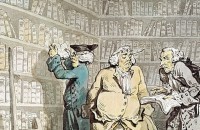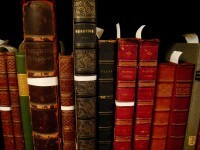Exciting news for all my fellow fans of the Dead and historical musicology! San José State University has announced an upcoming conference and symposium on the Grateful Dead, taking place November 5-8. So Many Roads: The World in the Grateful Dead, A Conference & Symposium "represents the culmination of five decades of academic work on the Grateful Dead phenomenon, and demonstrates how scholarly understanding of the Grateful Dead leads to broader understanding of a host of associated literary, historical, artistic, and social contexts and issues." According to Dead.net, there will be 50+ speakers participating in the conference– a mix of academics, band family members and associates, journalists, artists, musicians, and authors. The Grateful Dead's influence has been far-reaching across a variety of disciplines and panels will explore the band's impact on politics, business, journalism, religious studies, gourmet cooking, and more. To boot, there will also be an exhibit and celebration of San Francisco poster art on November 7, featuring artists like Stanley Mouse, David Singer, and Chris Shaw. Registration is required for attendance and interested parties will have the choice of purchasing either a one-day or full conference pass. I would love to attend myself but likely won't be able to make the trip. Sigh. A few years ago, I was lucky enough to catch a cool exhibit on the Grateful Dead at the New York Historical Society. It presented a small cross-section of the materia... [more Conference and Symposium on the Grateful Dead]
Coming soon: Catalogue 108 from Aleph-Bet Books, offering 500 collectible and rare children's and illustrated books. Ten Pound Island Co. just released Maritime List 225, entitled 'Old, Rare and Short'. Click here to browse. Tavistock Books recently issued 'A Catalogue of Catalogues'. Click here to browse. Kenneth Karmiole Bookseller, Inc. has issued "New Miscellany #38", a 16 page catalog of recent acquisitions. Edward T. Pollack's list of items he presented at the Brooklyn Antiques & Book Fair. Click here to browse. Brian Cassidy, Bookseller's latest catalogue, Fifty Cool Things Somewhat Haphazardly Arranged, includes strong selections of artists' books, Beat literature, punk and post-punk publications, and more. Click here to browse. The Boston Book Company just released their September New Arrivals list. Click here to browse. Ken Lopez Bookseller just released Catalogue 163. Click here to browse. E. M. Maurice Books' Autumn Catalog, Number 48, is available. Click here to browse. John Windle Antiquarian Bookseller is pleased to announce Catalogue 60: Books from a San Francisco Private Library, a major collection containing rare books and manuscripts in several fields, to be issued in parts throughout the year. Parts 1-3 have already been released; contact John to request existing parts or to be notified about new releases. E.K. Schreiber Rare Books has released their short list for September. Click here to browse. David M. Lesser, Fine Antiquarian Books LLC released Catal... [more September Catalogue and List Announcements]
UCLA's annual Kenneth Karmiole Lecture in Archival Studies will be presented by Professor Heather MacNeil on The Archive/Archives as Text: Themes and Variations on October 27. The Monk, the Bookseller, and the Manuscript: Tracking Lydgate's Boke of the Sege of Troy Through Bernard Quaritch's Catalogues PBS NewsHour's segment with Peter Mendelsund, the author of What We See When We Read and Cover, on dust jackets. A Bibliophile's Abode: the account of publisher and author Robert B. Wyatt's purchase of a Woodstock, NY home built by Thom Roberts. The Rosenbach Museum & Library currently has an exhibition on children's books on display. An exhibit on Caldecott award-winning illustrators Berta and Elmer Hader is on display at the Fisher's Children's Center of the San Francisco Public Library until October 23rd. InsideOUT, an exhibition of contemporary bindings of private press books, kicked off its US tour at Harvard's Houghton Library. The Center for Book Arts in NYC will be holding its 40th Anniversary Colloquium on The Collecting of Artists' Books on October 11. UK pop-up book artist Paul Johnson will be giving a demonstration and public lecture at Baltimore's Goucher College on October 1. The York Antiquarian Book Seminar's inaugural class this month, with ABAA members Rob Rulon-Miller and Lorne Bair participating as guest speakers. [more Endnotes: Rare Books News & Events]
Ray Smith of R.W. Smith Bookseller has published his long awaited photo book, In Time We Shall Know Ourselves (images available at the link). It contains 52 photographs from a three-month photographic road trip through the Eastern half of the United States in 1974, and includes essays on the photographs by Alexander Nemerov and Richard H. King of the University of Nottingham, and an afterword by the photographer. The book is the subject of a traveling exhibition organized by the Montgomery Museum of Fine Arts. Contact Ray for information on ordering a copy. A revised and expanded edition of Woman with Guitar: Memphis Minnie's Blues by Paul and Beth Garon of Beasley Books has just been released. Please contact Paul for information on purchasing and discounts to colleagues. Harper Levine of Harper's Books gives Ralph Lauren Magazine his top 10 picks for the ultimate art lover's library. Read here. Vic Zoschak, Jr. of Tavistock Books recently hosted his 11th Not-Quite-Annual Reference Book Workshop, which is geared to newbie booksellers and attempts to convey the importance, and continued need, of reference material, as used in the daily course of an antiquarian book business. Click here to read more. Richard Murian of Alcuin Books will be the book and autographs appraiser on Arizona Collectibles, a 13 part series on KAET-TV (Channel 80, the Phoenix PBS station). The series will air on Thursday evenings at 7:30 P.M. Click here for past episodes. Dan Dwyer of Johnnycake Books co... [more New Antiquarians in the News]
UPDATE - The box of books have arived after two months of travel. A small box shipped from a bookbinder in Bath, England sent to Santa Monica, CA has gone missing. Five books were returned, four pamphlets by Thomas Taylor, "the Platonist", each rebound in new full calf, and a Chinese New Testament. Shaghai, c.1870 with a new calf back. If you are offered these items, please contact Ken Karmiole. [more Missing in Transit from Bath, UK to Southern California]
This item is still missing as of 5/29/2019. The following item was reported missing in transit: CUMING, Fortesque (1762-1828). Sketches of a Tour to the Western Country, Through the States of Ohio and Kentucky; A Voyage Down the Ohio and Mississippi Rivers, and A Trip Through the Mississippi Territory, and Part of West Florida. Commenced at Philadelphia in the Winter of 1807, and Concluded in 1809 ... Together with a Notice of an Expedition Through Louisiana. Pittsburgh: Cramer, Spear & Eichbaum, 1810. 12mo (6 3/4 x 4 1/4 inches). 504pp. (Pale dampstain at the gutter of the first signature). Original muslin-backed blue paper covered boards. Housed in a red morocco backed slipcase. Fine unsophisticated copy in original boards. If you have any information on this item, please contact Donald Heald Rare Books at (212) 744-3505 or Ilena@DonaldHeald.com. [more Missing in Transit: Cuming’s Sketches of a Tour to the Western Country]
Hello. And greetings from England. When I was asked by the ABAA to become a contributor to The New Antiquarian, I was delighted. But what to write? Much is made of the differences between British and American English—two nations divided by a common language, and all that—and I'll admit that I enjoy discovering differences between the two forms of English on my regular visits to the US. There are words which American booksellers use which we don't in the UK, such as inventory ('stock' over here) and booth, at a book fair (we say 'stand'), but one thing I have particularly noticed in the last few years is the use of the word 'rare', as in 'rare books'. (The word 'antiquarian' is another difficult one, but I'll leave that to Laurence Worms over at The Bookhunter on Safari.) So, what of 'rare'? The Oxford English Dictionary defines it as "of a kind seldom found, done, or occurring; unusual, uncommon, exceptional." (Pleasingly, the earliest citation in the OED for this use of 'rare' is to do with books: "That book is rare And straunge to gete", Bokenham, Lives of Saints, 1447.) Certainly, I've always thought it to be part of some sort of scale: uncommon, scarce, very scarce, rare, very rare, unrecorded (or whatever). Just recently, my business became a limited company, and I was wondering whether to change the name, from 'Simon Beattie' to 'Simon Beattie Rare Books'. An American bookseller friend commented that if I called the company 'Simon Beattie Rare Books' I wouldn't be a... [more In Search of ‘Rare Books’]
UPDATE (12/8/14): BOOK RECOVERED Bromer Booksellers has reported a missing children's book (description below). If you are offered this item, please contact Bromer Booksellers at (617) 247-2818 or email shop manager Philip Salmon (phil@bromer.com). (Juvenile). W. BELCH'S HISTORY OF BEASTS. Newington Butts, London, W. Belch, c. 1820. 12mo. 8 ff. Illustrated with sixteen hand-colored engravings of various animals, arranged two per page. These are accompanied by a quatrain printed in the middle of the page, as well as the printed names of each animal. The printer Belch issued a number of children's books in this format, though this title is apparently unrecorded. Apart from some minor creasing to corners of covers and a few pages, this is a nearly fine copy of an ephemeral children's book. See an uploaded photo of the item here: https://www.flickr.com/photos/bibliophagist/15128255901/in/photostream/ [more Missing: Belch’s History of Beasts]
Zisska & Lacher list of books from auction No. 59 (May 2012) possibly stolen from Girolamini Library
By Susan BenneAt the request of the ILAB Committee, Munich-based auction house Zisska & Lacher (formerly Zisska & Schauer) has provided a list of the books confiscated or withdrawn from their auction No. 59 (May 2012) as material suspected of having been taken illegally from the Girolamini library. Because the computer belonging to the firm's former manager Herbert Schauer has been confiscated by the Bavarian police, no electronic copy of this list was available and Zisska & Lacher could only provide a hard-paper copy. ILAB has scanned and created a SEARCHABLE PDF document from the approx. 80-page list received from the auction house. A copy of the list may be found here (the file is 6MB – be patient in downloading): Zisska List This list is divided into three parts: 1. A short list of books confiscated by the authorities prior to the auction. 2. Approx. 50 to 60 items not included in auction 59 for unknown reasons. 3. Some 430+ lots with detailed descriptions of the books withdrawn from auction 59. ILLUSTRATIONS OF LOTS Zisska & Lacher has also provided ILAB with a file of illustrations of the catalogued lots of auction 59. The effort and cost to match these illustrations to this list would be prohibitive; however, the ILAB Committee will gladly forward the file to those who need to see it. Contact secretariat@ilab.org if you need a copy of the illustration file. ACTION TO TAKE The ILAB Committee believes it important that booksellers examine this PDF document in hopes of avoiding the d... [more Zisska & Lacher list of books from auction No. 59 (May 2012) possibly stolen from Girolamini Library]
This item is still missing as of 5/28/2019. The following item has been reported missing: Nelson Mandela's LONG WALK TO FREEDOM, signed by Mandela with the signature dated "25 5 95" (May 5, 1995). The book was displayed in a sealed bag with a strip that reads "Personally signed by Nelson Mandela." If you are offered or have any information about this item, please contact Atlanta Vintage Books at 770-457-2919 or avbooks@att.net. [more Missing: Signed Copy of Nelson Mandela’s ‘Long Walk to Freedom’]

